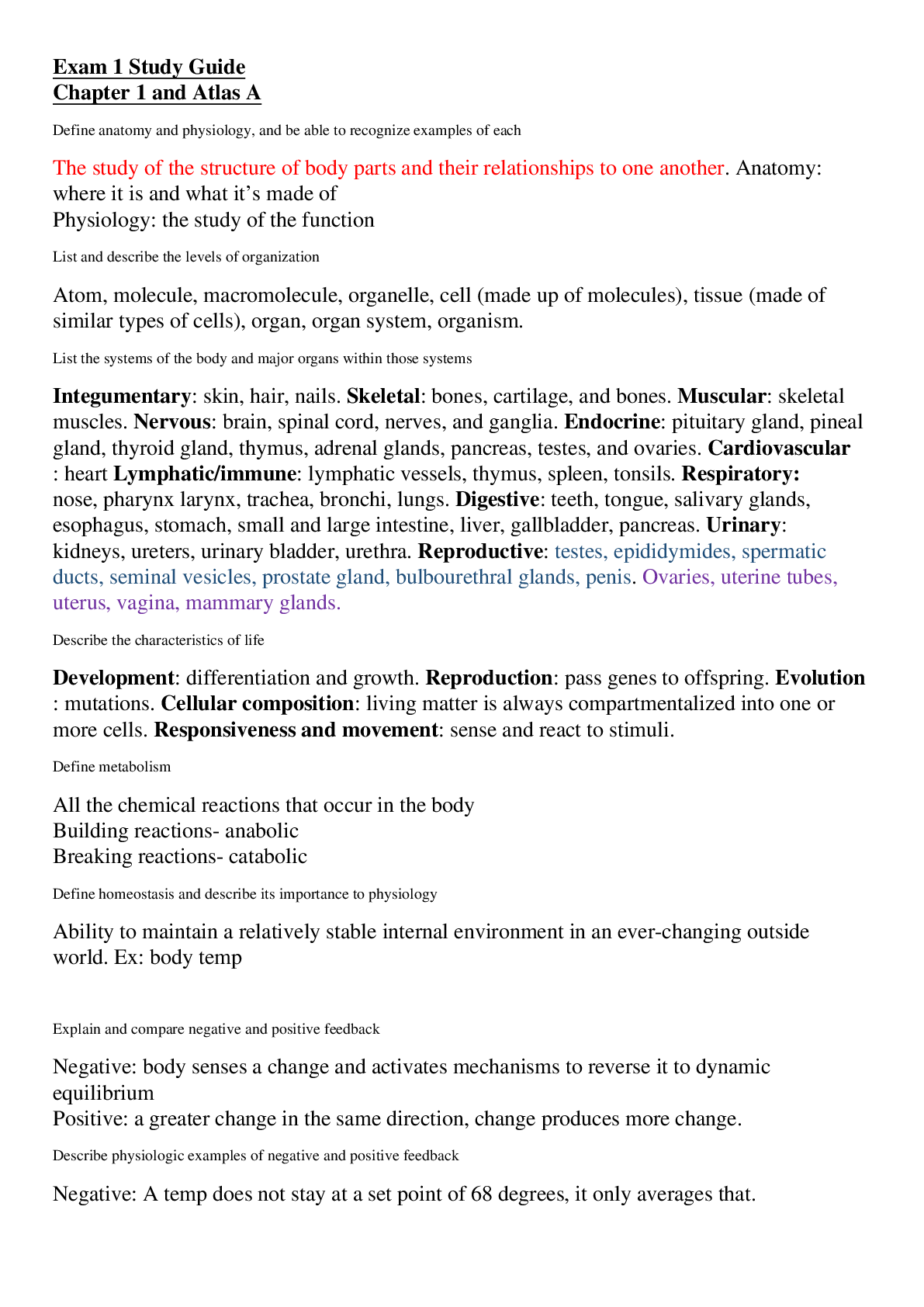Health Care > QUESTIONS & ANSWERS > NUR 335 Maternal Health Exam 1 Study Guide Antepartum Nursing Care (All)
NUR 335 Maternal Health Exam 1 Study Guide Antepartum Nursing Care
Document Content and Description Below
What are the trends and issues? ○ Birth Rates ● Total fertility rate: the average number of children that would be born per woman if all women lived to the end of their childbearing years and b... ore children according to a given fertility rate at each age. ○ If greater than 2 = population is growing. ○ If less than 2 = population is decreasing. ○ In the US the TFR is 1.87 children born per woman ● Birth Rate: the number of live births per 1000 people ○ In the US the birth rate is 12.5. ● Both of these rates have decreased in the past 50 years: ○ High variety of contraceptives. ○ More women delaying reproduction due to careers, or would like to have fewer children or no children at all. ○ Legalization of abortion. ○ Rising cost of raising children. ○ Infant mortality rates ● “Death before the first birthday”. ● In the US rates have dropped from 26/1000 (1960) to 5.8/1000 (2017). ○ This can be related to: ■ Improvement in knowledge of high risk neonates. ■ Improvement in technology to detect high risk. ■ Improved prenatal care ■ Increase infant sleep safety education. ● Leading cause of death is SIDS ○ Maternal death and mortality rates. ● Maternal death: death of a woman during pregnancy or within 42 days of pregnancy termination. ○ Death must be caused by conditions aggravated by the pregnancy or associated medical treatments. Excludes accidents or injuries. ● Late maternal death is death 42 days after termination of pregnancy from a direct or indirect obstetric cause. ● Maternal Mortality Ratio (MMR): The number of maternal deaths per 100,000 live births. ○ In the US, MMR has decreased significantly from 607.9 (1915), to 12 (1990). ○ Currently the US has an MMR of 14. ● Causes of maternal death include ○ Severe hemorrhage ○ Infections ○ Eclampsia ○ Obstructed labor ○ Complications of abortions ○ MISC: anemia, HIV/AIDS, and CV disease. ○ Birth Rate for teenagers ● Has been declining since 1990. ○ (1990-2016) - decreased 76.5%. ■ (2010-2016) - decreased 49.1% ○ In 2016, teen birth rates were 21 per 1000 females age 15-19. ● Teen mothers are more likely to: ○ Have additional children & be unmarried. ○ Adverse long term effects on the mother and children. ○ Live below the poverty line. ○ Higher risk for STI and HTN during pregnancy. ○ Lower level education completion. ○ Tobacco/Substance abuse during pregnancy ● Tobacco ○ Highest prevalence occurs between the ages of 20-24, and has declined from 19.5% (1989) to 8.4% (2014). ○ Associated with increased risk of LBW, intrauterine growth resitriction, miscarriage, abruptio placenta, premature birth, SIDS, and respiratory problems in the newborn. ○ Also, mothers are less likely to breastfeed. ● Substance Abuse ○ Illicit drugs are common in women ages 18-25. ■ Cocaine can cause strokes and seizures in the fetus and can affect cognitive performance, information processing, and attention to tasks in children. ■ Marijuana can have a negative effect on the neurological development of the fetus. ○ Alcohol is common in women ages 26-34. ■ Associated with fetal death, low birth weight, intrauterine growth restriction, mental retardation, and fetal alcohol spectrum disorders (FASDs). ○ Obesity ● BMI greater than or equal to 30. ● Higher risk for gestational hypertension, preeclampsia, and gestational diabetes, thromboembolism, cesarean birth, wound infections, shoulder dystocia, sleep apnea, and anesthesia complications. ● Fetuses are at higher risk for abnormalities (spina bifida, heart defects, anorectal atresia, and hypospadias), intrauterine fetal death, birth injuries (when fetus is over 4000g), childhood obesity, and diabetes. ○ This is gradually increasing - ■ (2000) 30.5% of adults & 13.9% of young women were obese. ■ (2014) 36.5% of adults & 17% of young women were obese. ○ Health Disparities ● Use of health care services, access to health care, sexual orientation. ○ Maternal and child health goals ● Healthy People 2020 Goals ○ Reduce rate of fetal deaths at 20 weeks or more. ○ Reduce rate of fetal and infant deaths during perinatal period. ○ Reduce the rate of all infant deaths, neonatal deaths, postnatal deaths, deaths RT birth defects, congenital heart defects, & SIDS. ○ Reduce mortality rates for infants with down syndrome. ○ Reduce maternal mortality and maternal illness. ○ Reduce cesarean births in low risk women. ● Ethic and standards ○ Legal issues in Delivery of Care (Fetal Monitoring) ● “Failure to communicate” is the largest issue in malpractice suits. When a nurse fails to communicate declining or concerning information to the attending physician. ○ Inability to recognize or respond to intrapartum fetal compromise. ○ Inability to perform a timely cesarean birth (30 minutes from decision to incision. ○ Inability to initiate resuscitation of a depressed neonate. ○ Inappropriate use of oxytocin or misoprostol leading to uterine tachysystole, uterine rupture, or fetal intolerance of labor or fetal death. ○ Inappropriate use of forceps/vacuum and/or preventable shoulder dystocia. ● Fetal Monitoring - interpretation of fetal heart rate (FHR). ○ Failure to . . . ■ Accurately assess maternal and fetal status. ■ Appreciate a deteriorating fetal status. ■ Treat and abnormal or indeterminate FHR. ■ Reduce or DC oxytocin with an abnormal or indeterminate FHR ■ Correctly communicate maternal and fetal status to the provider. ■ Institute the chain of command when there is a clinical disagreement. ○ ANA code of ethics ● Describes goals, values, and obligations of nursing. [Show More]
Last updated: 1 year ago
Preview 1 out of 13 pages
Instant download
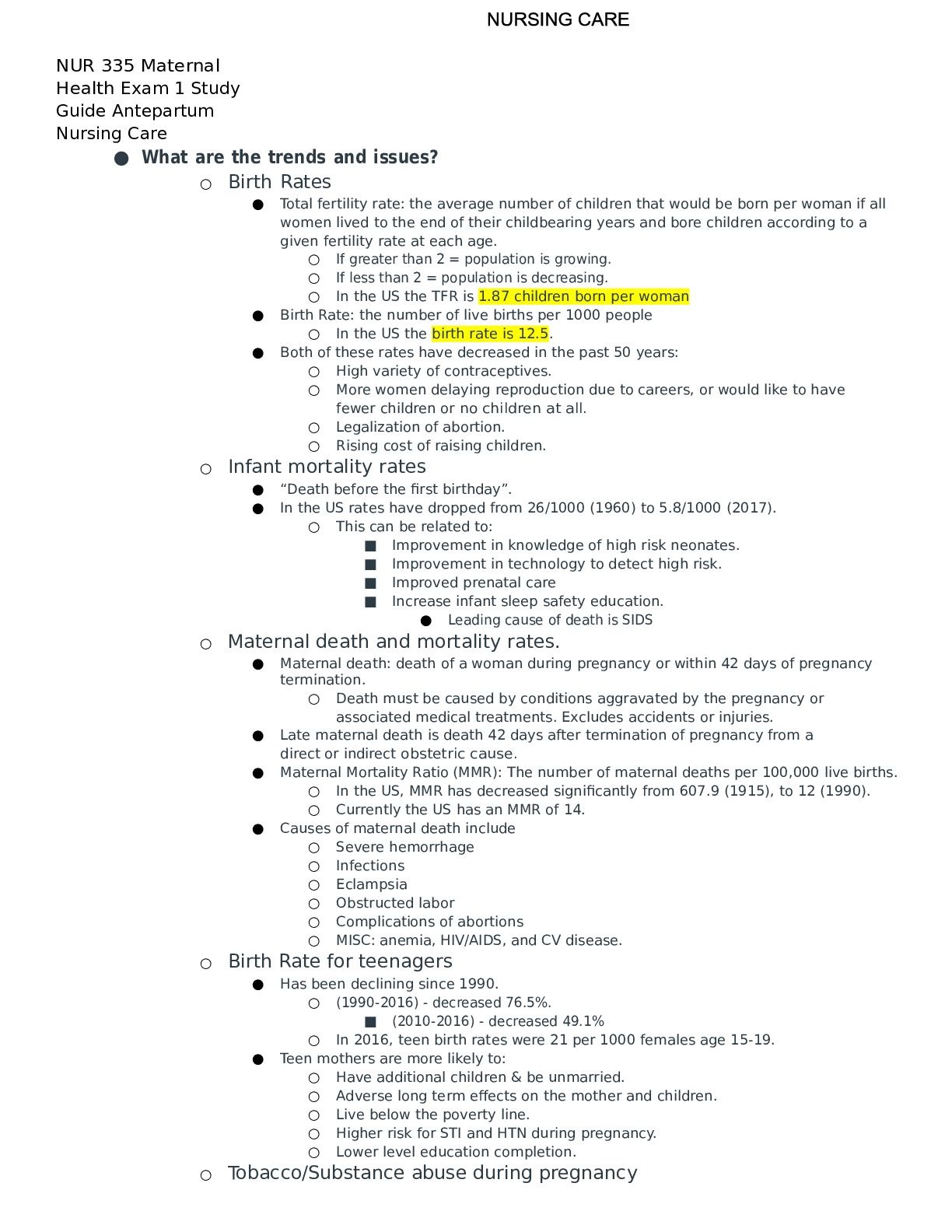
Buy this document to get the full access instantly
Instant Download Access after purchase
Add to cartInstant download
Reviews( 0 )
Document information
Connected school, study & course
About the document
Uploaded On
Jan 12, 2023
Number of pages
13
Written in
Additional information
This document has been written for:
Uploaded
Jan 12, 2023
Downloads
0
Views
88





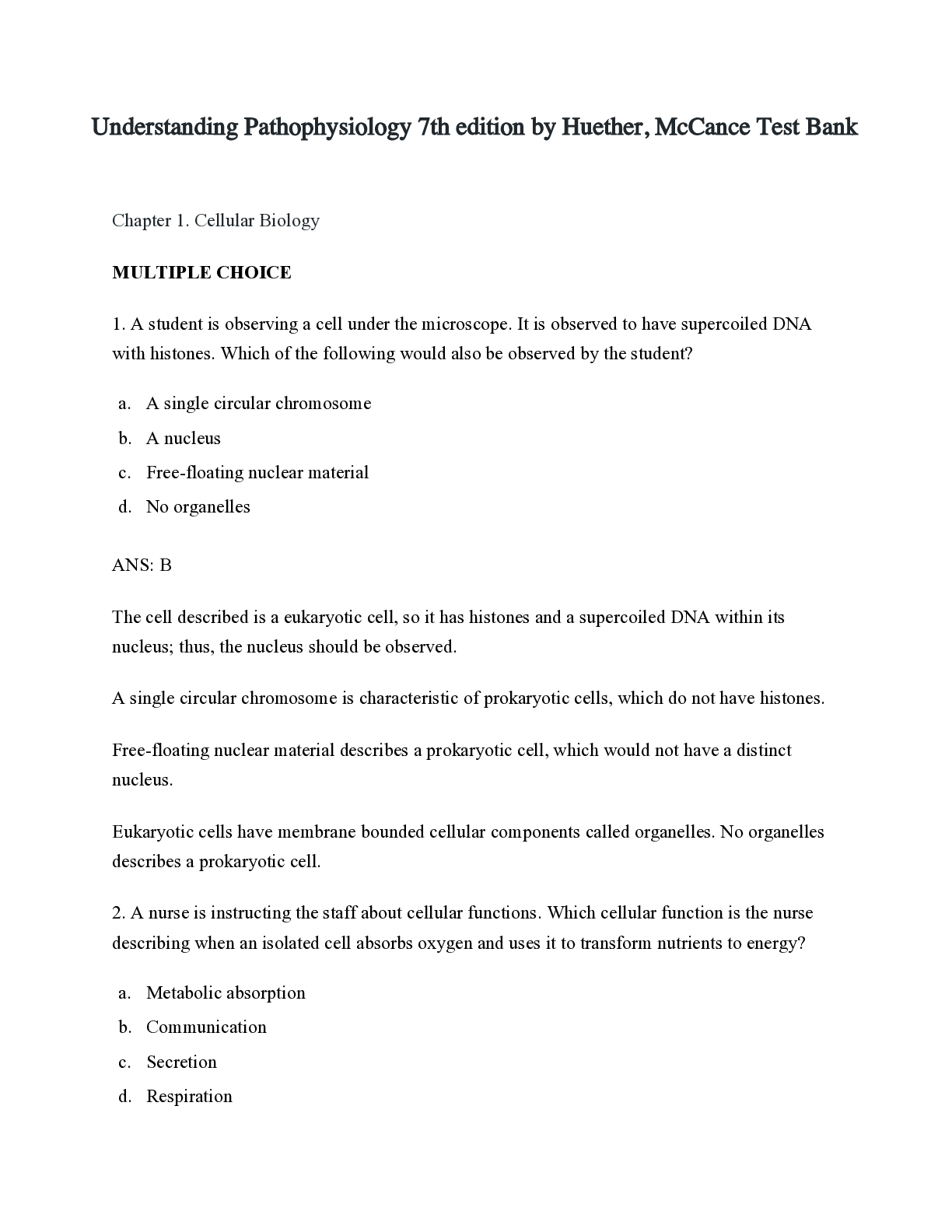

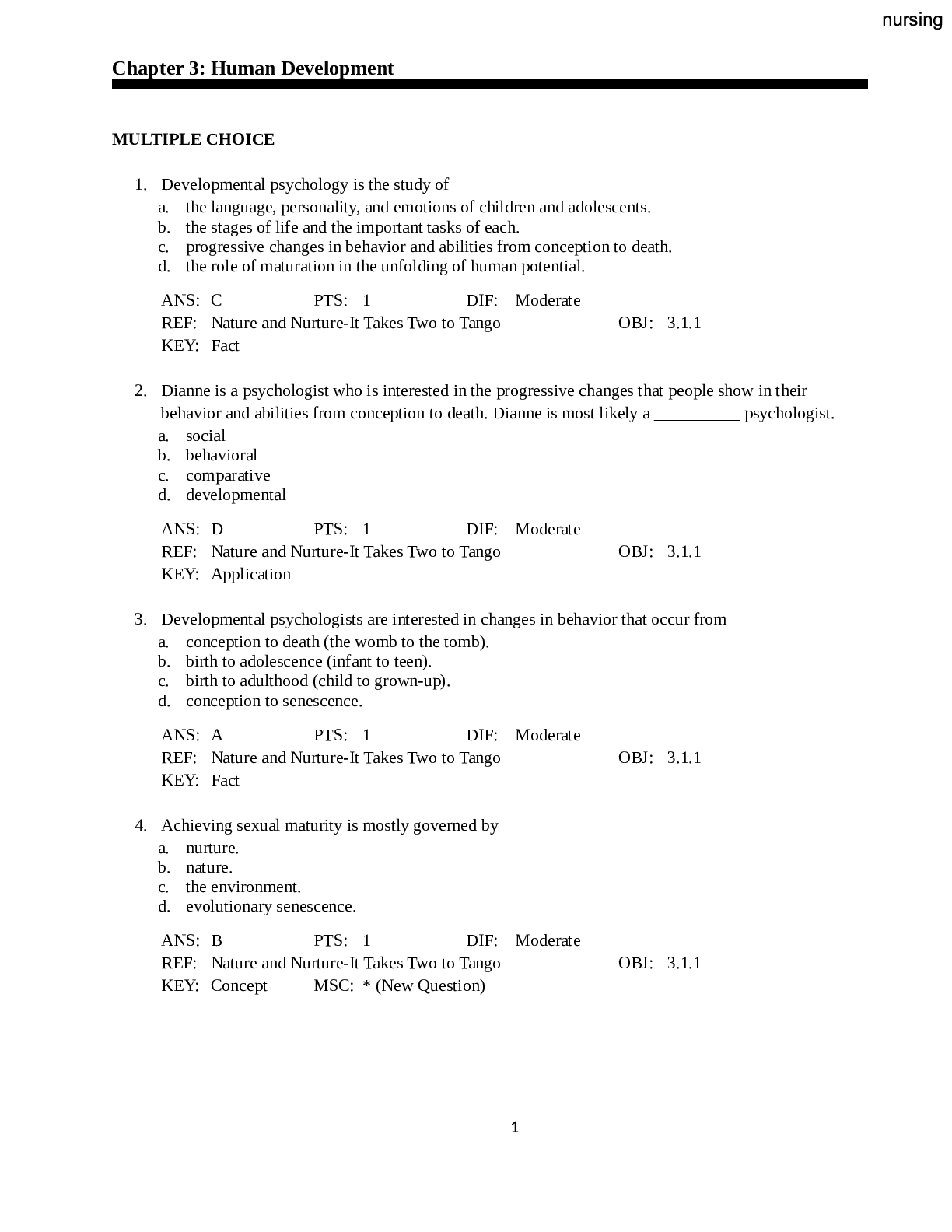

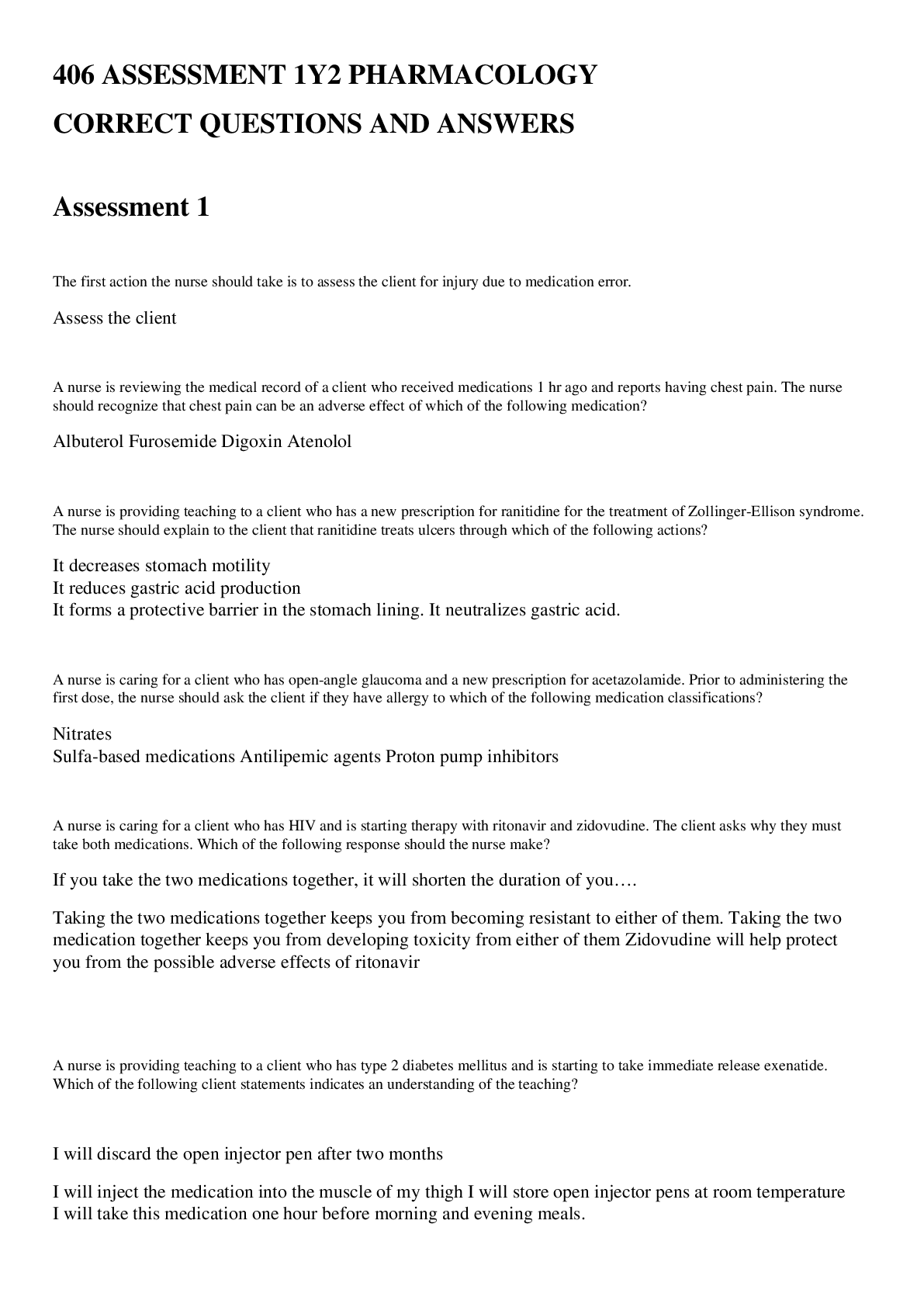
.png)
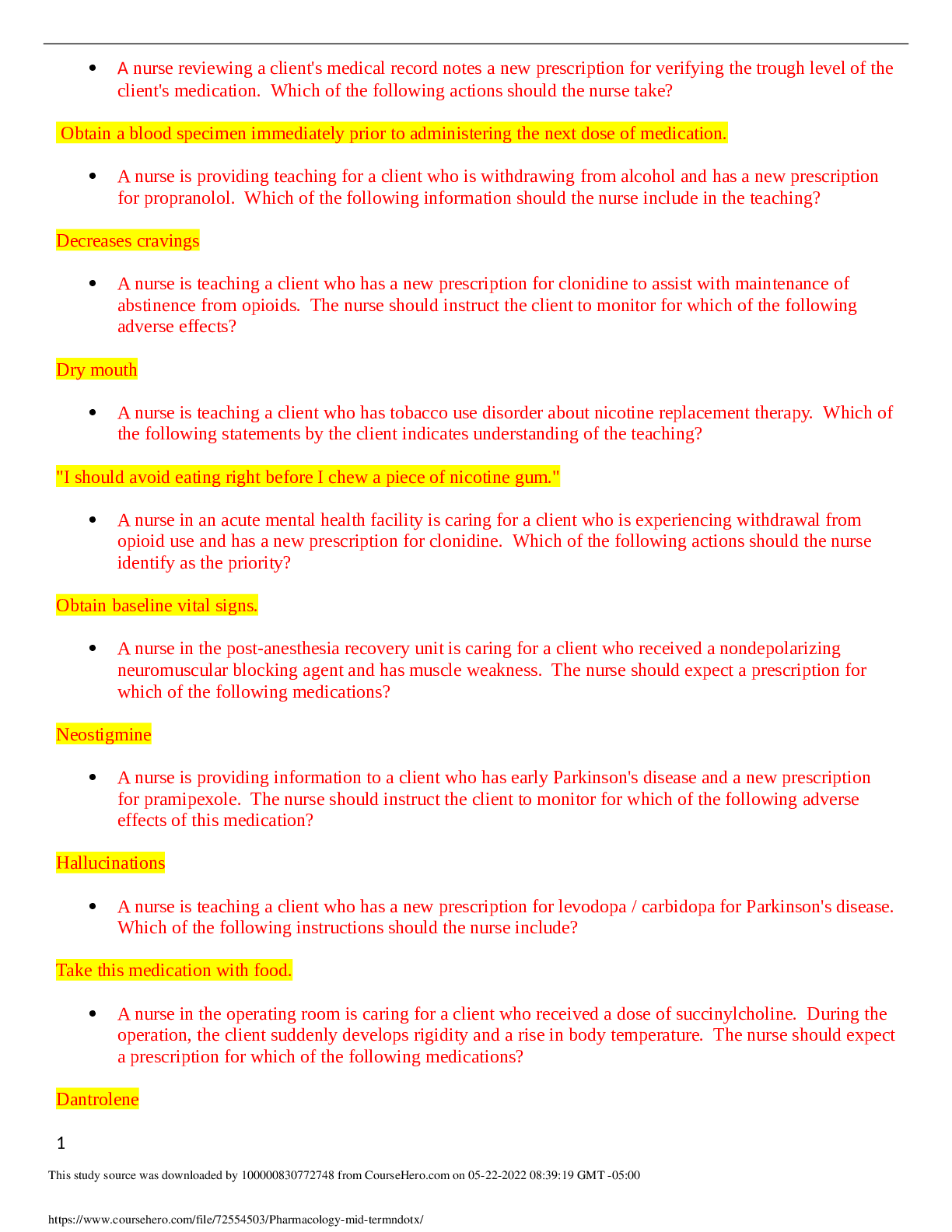
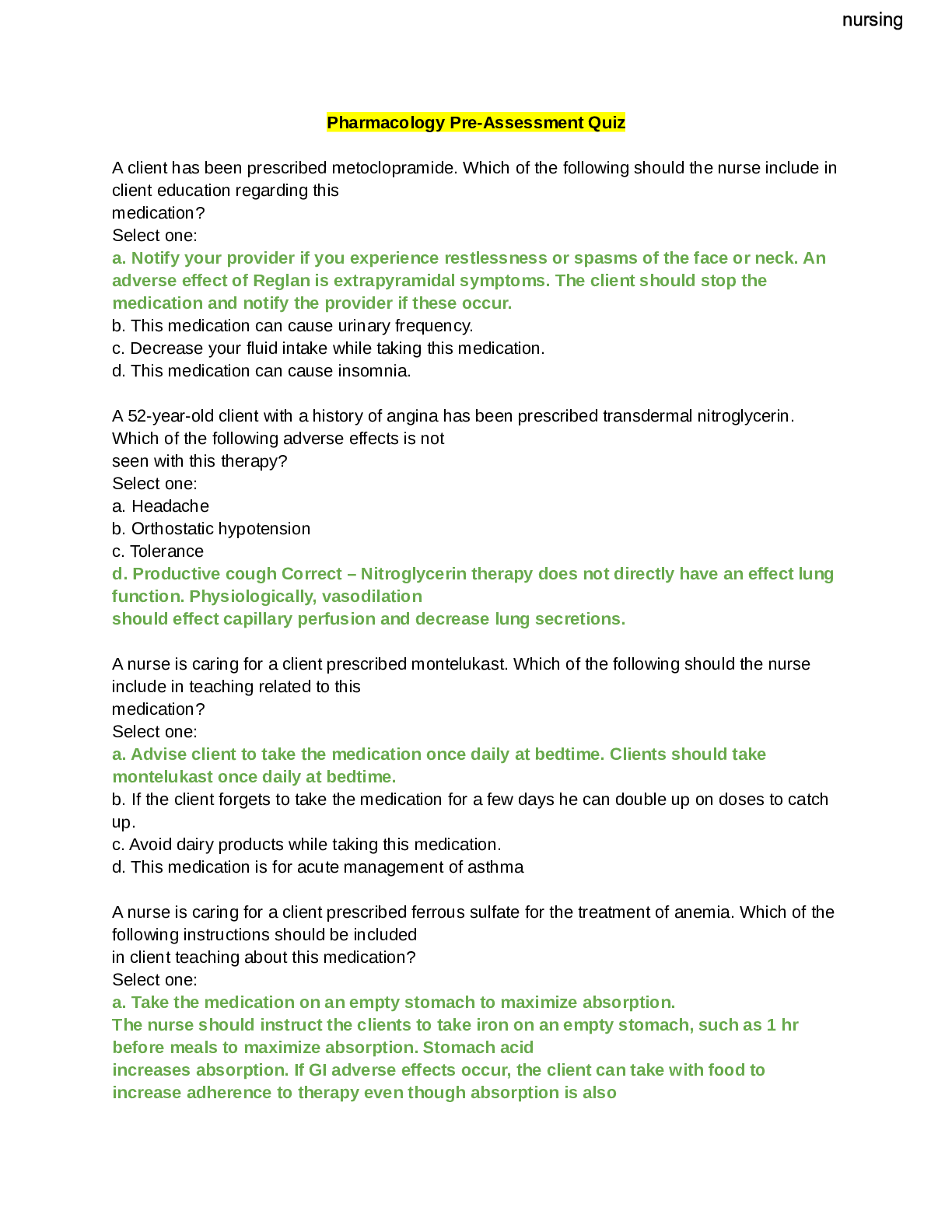
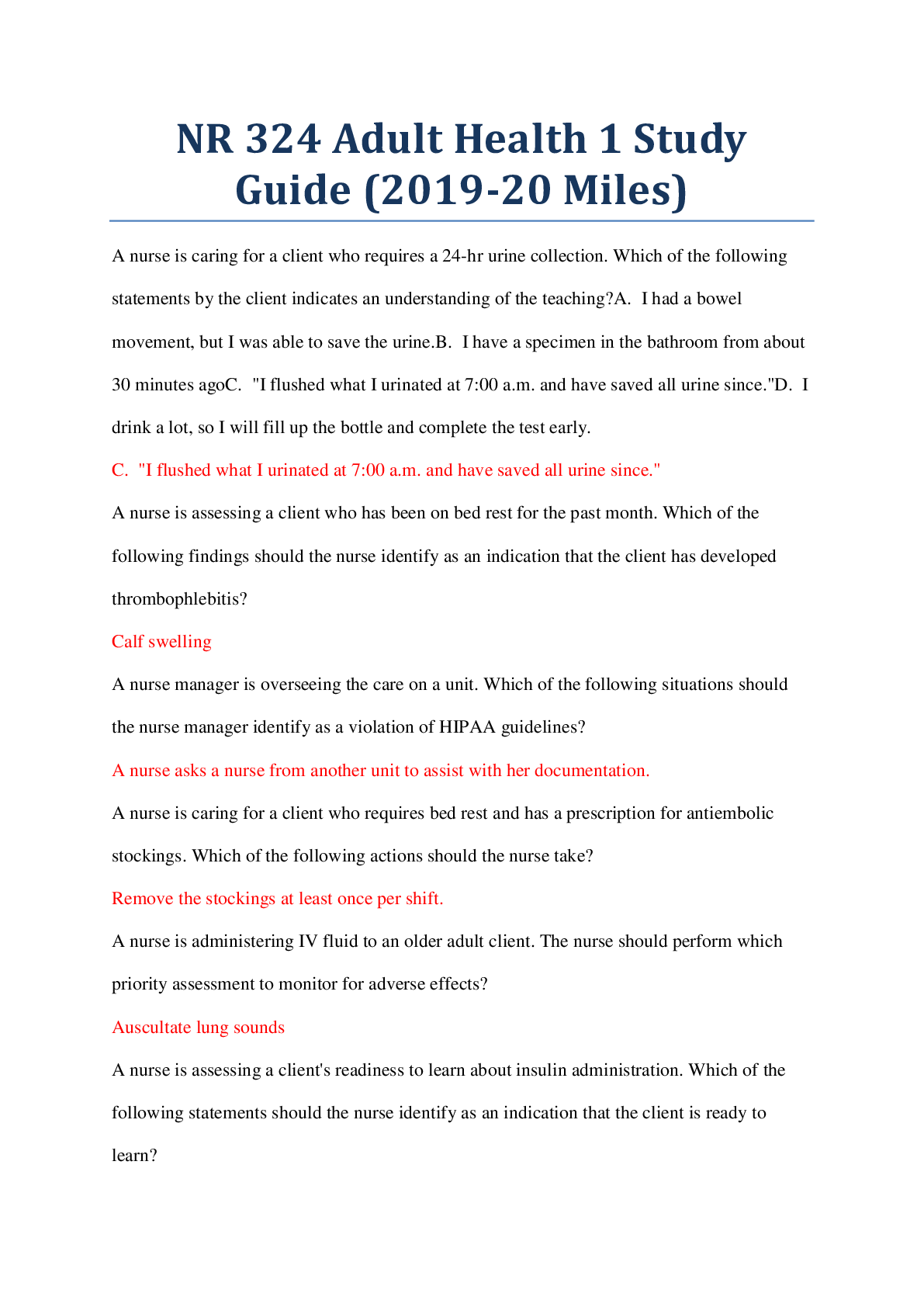
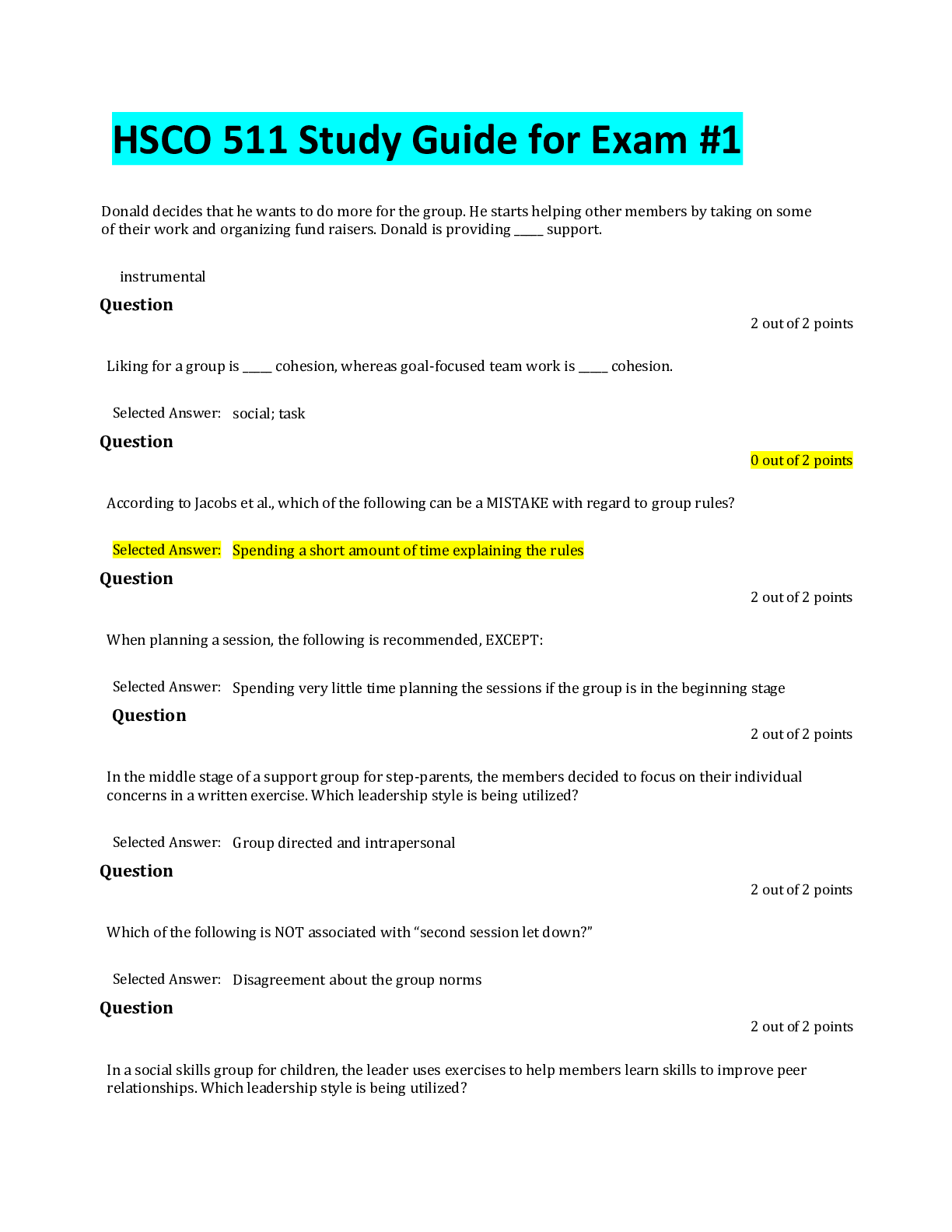
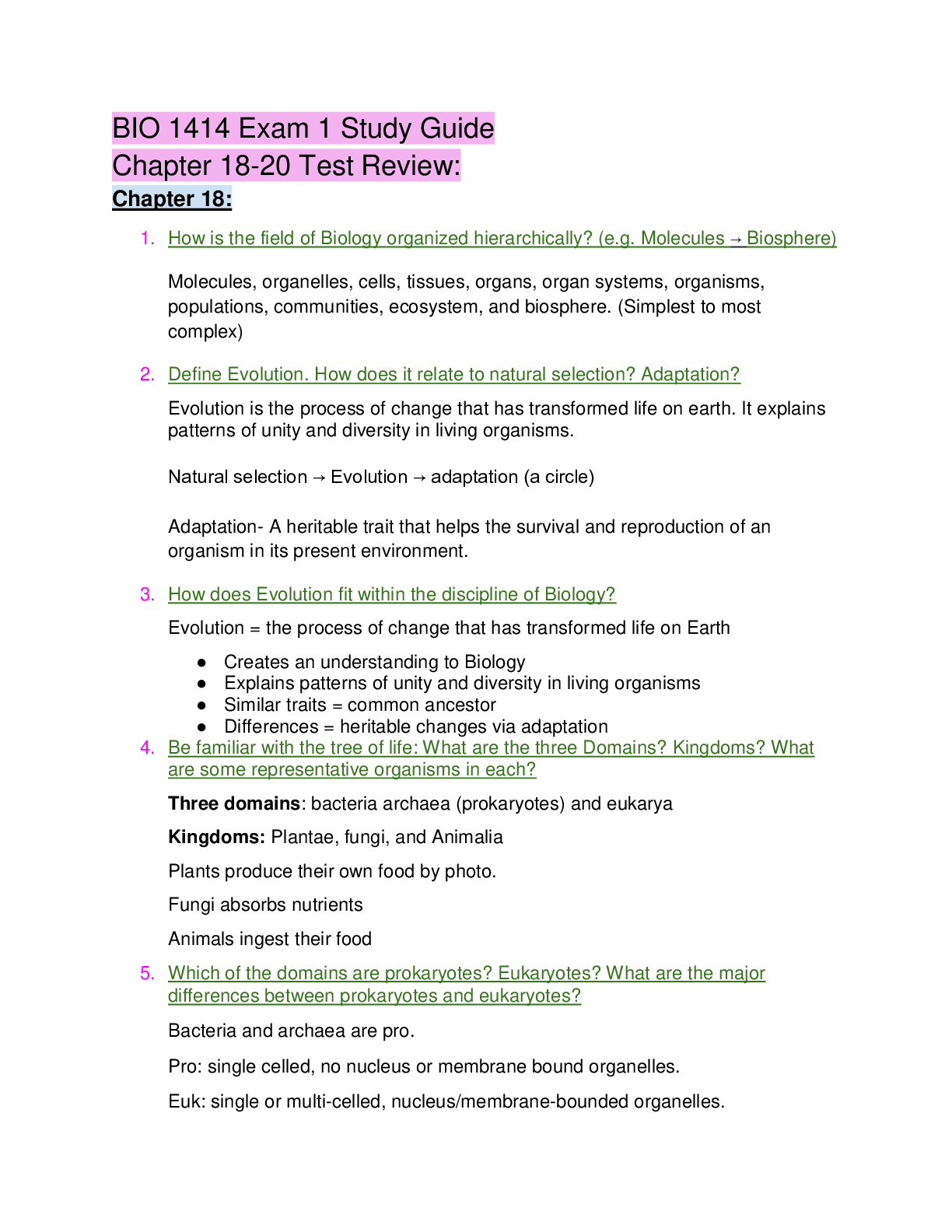
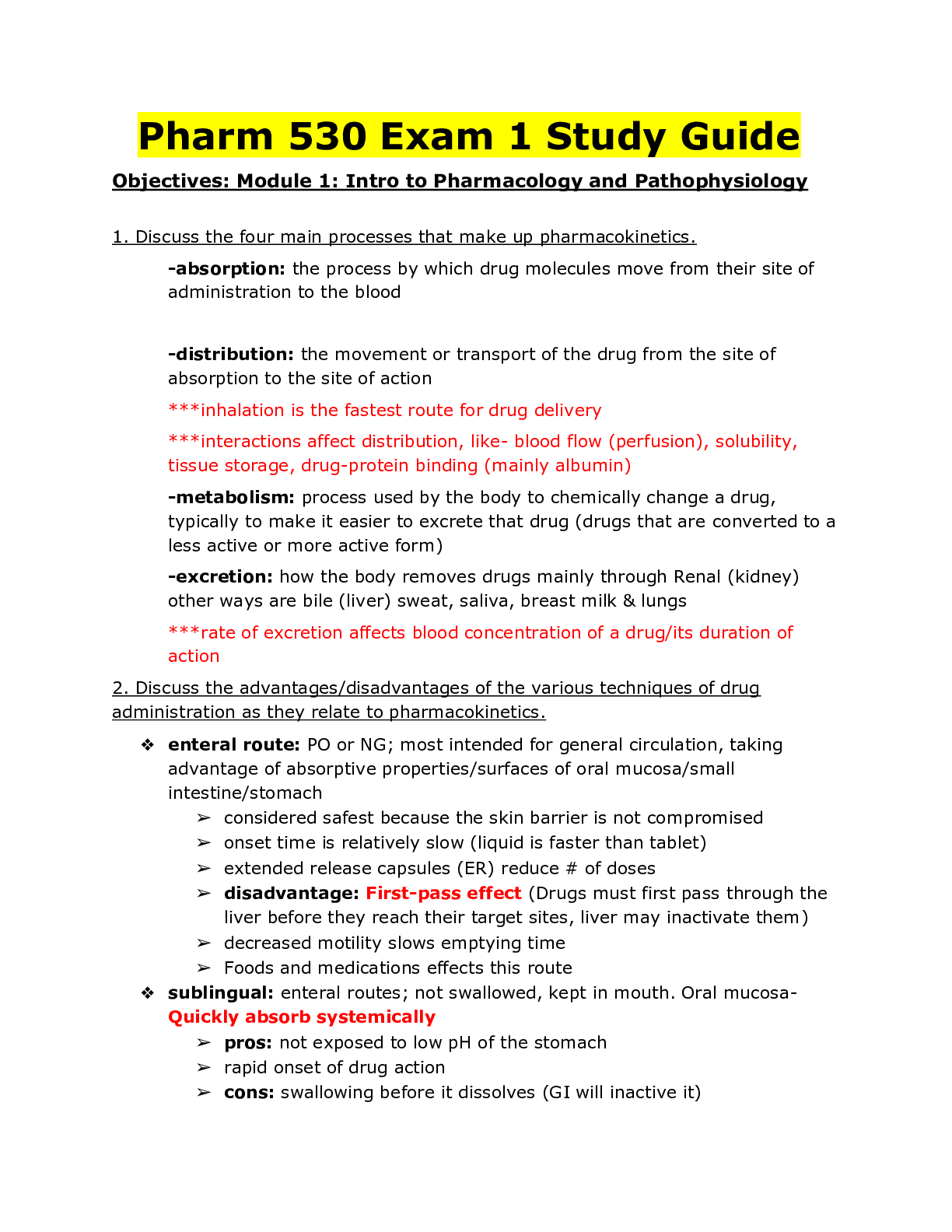


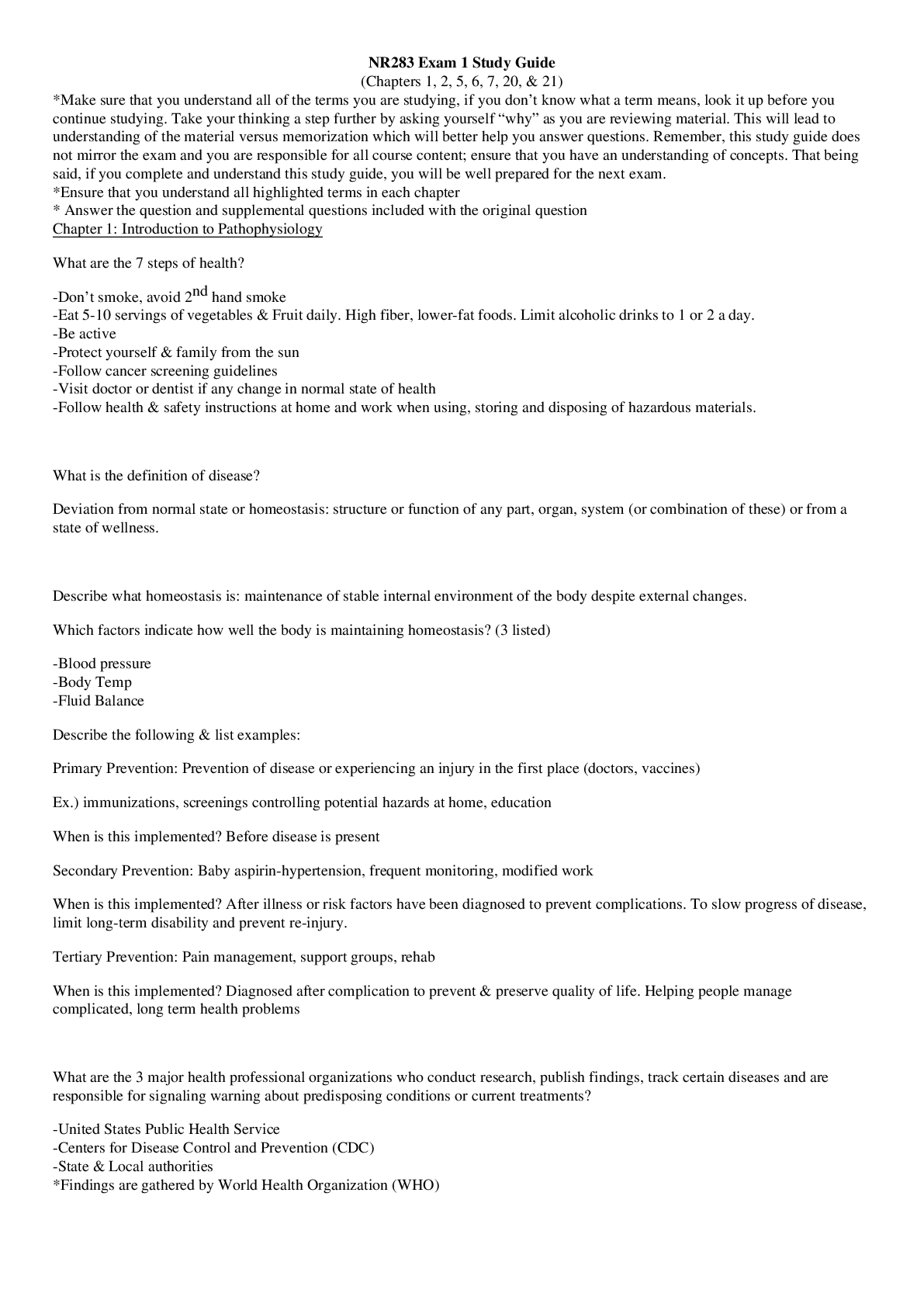
 (3).png)
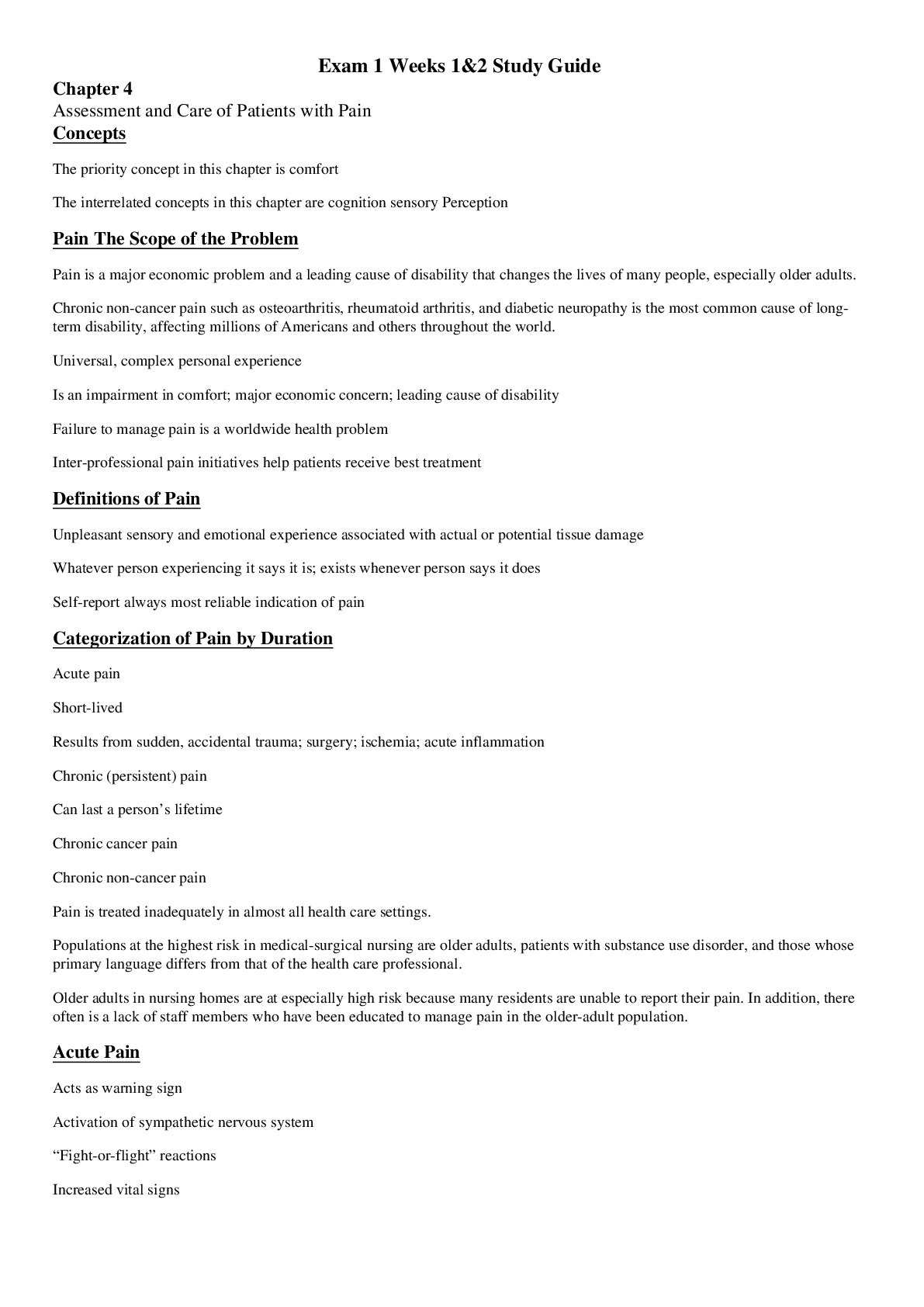
.png)

